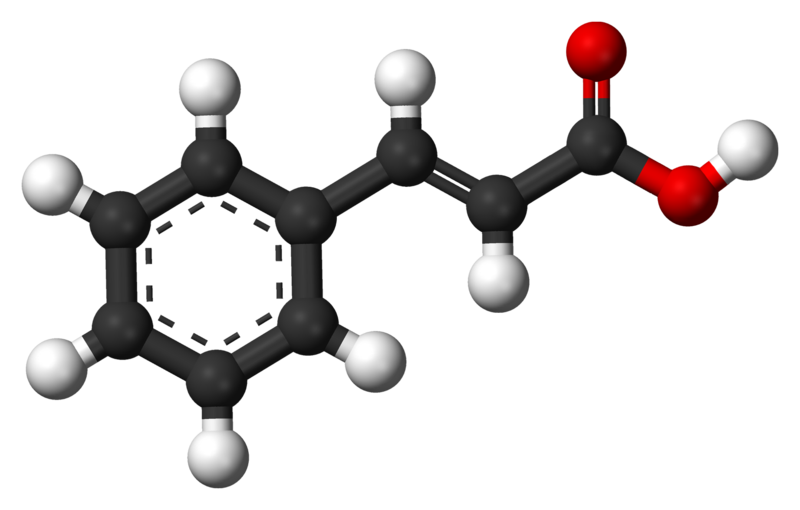
by theglamscientist | | broad spectrum, om-cinnamate, shea butter, spf, sunscreen, UV absorption, UVA, UVB |

On more than one occasion, I have heard and seen shea butter being purported as a sunscreen. While I know this to be untrue, I thought it would be a good idea to explain where this particular shea butter myth comes from, what’s true and what’s not.
Natural, unrefined Shea butter is very complex. If you’ve ever melted pure shea butter and noticed a gritty texture when it cooled, then you’ve experienced firsthand just how complex it is. The chemical component that people attribute to shea butter’s sun protection is cinnamic acid. Cinnamic acid does, indeed, have UV absorption properties in the 250-300 nm wavelength (UVB). However, the concentration of cinnamic acid in shea butter is not strong enough to provide any real sun protection. Even when shea butter is standardized for a higher concentration of cinnamic acid, it still doesn’t provide substantial sun protection. Alternatively, the cinnamic acid in shea butter can work in synergy with organic sunscreen actives (ex: OM-Cinnamate)to give a broader spectrum SPF (more UVB protection and maybe some UVA protection). **We’ll discuss synergy in a later post.
To sum it all up, shea butter alone is not enough to protect your skin from the harmful rays of the sun. It may (or may not) give your sunscreen of choice an extra boost of sun protection when applied separately. The synergy more than likely works better in the actual formulation. If you’re looking for a sunscreen with broad spectrum protection, shea butter is an ingredient that you probably want to see in the ingredients list. Plus, you get all the other benefits of shea butter with just one product.
Here’s to the Glam Life!

by theglamscientist | | spf, sun care, sun protection factor, sunscreen, UV radiation, UVA, UVB |

Late last week, someone tweeted that they were about to put on their SPF 100 lotion. My immediate reaction was “Wow! Marketing at its finest!” We all know by now that sunscreen is of the utmost importance in protecting our skin from harmful sun rays. Sun damage rears its ugly head in the form of dry rough skin, wrinkles and even skin cancer. None of which any of us want. But is one SPF any better than another? Let’s explore sun protection.
What are we afraid of?
There are actually 3 forms of UV (ultraviolet) rays: UVC, UVB and UVA. UVC has the shortest wavelength of the 3 and is also the most dangerous. We don’t often hear about UVC because the ozone layer protects us from those rays. UVB appears next in the light spectrum with a longer wavelength. It is the culprit behind sunburn. Finally, UVA rays have the longest wavelength of all ultra violet light. The longer wavelength results in less damage in a given time period. In fact, the difference in rate of damage caused by UVB and UVA rays is astronomical. UVA rays are thought to cause more long term damage that may affect deeper layers of the skin. In short, we should focus on protecting our skin from both UVB and UVA rays.
I like to use metaphors to simplify science so let’s try this explanation of UV rays. Consider a day at the beach. The day could be pleasant—warm, sun shining, very relaxing… there’s a gentle breeze so any noticeable waves are few and far between. Or the day could be slightly overcast with a stronger breeze… waves are coming with significantly more frequency, but it’s not exactly a tropical storm. Then you have stormy weather, not only is it cold and wet, but the waves are beating the shore more often than not. The frequency and tenacity of the waves at the beach represent the various UV rays. The best day at the beach correlates to UVA and the worst day to UVC. Get the picture? Good!
Sunscreen agents are classified as physical protectors (UV reflecting) or chemical protectors (UV absorbing). The physical protectors work to reflect both UVB and UVA rays. Chemical protectors generally absorb UVB rays although there is some overlap in function between the two. Some UV protectors are compromised by the sun; thus, they must be used in conjunction with other ingredients to stabilize them.
So what is SPF and how is it determined?
Sun Protection Factor (SPF) refers to the level of UVB protection a product offers. Note I said UVB protection. Currently there is no test for level of UVA protection in a product. While many companies have released high SPF products ranging from 45+ to 100, this is more of a marketing strategy than a real difference in protection. It would be easy to assume that SPF 30 was twice as effective as SPF 15 and so on, however, that is not the case. In reality, SPF 15 will block around 94% of UVB rays, SPF 30 blocks 97% and SPF 45 blocks 98%. The increase in sun protection becomes more and more negligible as the SPF increases. In essence, an SPF of 100 is not as amazing as it sounds.
In order for a product to make an SPF claim, it must undergo clinical testing. In this testing, 10-20 healthy, fair skinned individuals are exposed to UVB radiation from an artificial source similar in intensity to that of the noon sun. The test measures the time it takes each participant’s skin to burn while wearing sunscreen in comparison to the time it takes the skin to burn without sunscreen. Of course, everyone’s skin is different, thus the average of this ratio is taken to determine the SPF of a given product. Keeping in mind that testing is very controlled, there are a number of factors that will determine how well a given product will protect you. Those factors include the actual intensity of natural UVB rays, your unique skin type, the amount of sun care product you apply and how often you apply it.
To sum it all up:
Everyone needs sun protection.
Don’t believe the hype, SPF 30 is Glam approved.
Use sunscreen liberally and apply it often, especially when you’re outdoors.
Here’s to the Glam Life!



